RELEASE
NES December 18, 1987 (JPN) ; July 12, 1990 (US)
MSX June 1, 1989 (JPN)
WonderSwan Color December 9, 2000 (JPN)
PlayStation October 31, 2002 (JPN) ; March 14, 2003 (EU) ; April 8, 2003 (US)
GBA July 29, 2004 (JPN) ; November 18, 2004 (AU) ; November 29, 2004 (US) ; December 3, 2004 (EU)
Mobile Phone March 1, 2004 (JPN)
PSP April 19, 2007 (JPN) ; June 26, 2007 (US) ; February 8, 2008 (EU)
Wii Virtual Console May 26th 2009 (JPN) ; October 5, 2009 (US) ; May 7th 2010 (EU)
PSN [PS1 version] June 24, 2009 (JPN) [PSP version] February 16, 2011 (EU/AU)
iOS February 25, 2010 (JPN/US/EU/AU)
STORY
Final Fantasy takes place in an unnamed fantasy world with three large continents. The world's elemental powers are determined by the state of four glowing crystals ("orbs" in the original North American localization), each governing one of the four classical elements: earth, fire, water, and wind.
In the two centuries prior to the start of the game, violent storms sunk a massive shrine that served as the center of an ocean-based civilization, and the water crystal went dark. Two centuries before that, a group of people known as the Lufenian, who used the wind crystal's power to craft giant aerial stations ("Flying Fortresses") and airships, watched their country decline as the wind crystal went dark. Eventually, the earth and fire crystals also went dark, plaguing the earth with raging wildfires and devastating the agricultural town of Melmond as the plains and vegetation decayed. Some time later, a sage called Lukahn tells of a prophecy that four Warriors of Light will come to save the world in a time of darkness.
JOBS
- Warrior (Fighter)
- Monk (Black Belt)
- Thief
- White Mage
- Black Mage
- Red Mage
TRIVIA
- In Final Fantasy IV: The After Years, the Four Fiends are guardians for the True Moon crystals.
- Supposedly, the world of Final Fantasy did at one point have summons, as shown in Dissidia Final Fantasy, but Garland banished them into the Interdimensional Rift.
- Some of the enemies present in the game were taken from the first edition of the Dungeons & Dragons role playing game, including the Mindflayer and the Ochu.
- The original Famicom release and MSX versions had some different graphics. Two of the most obvious changes are done to two types of monsters - the Medusa enemies were originally topless, while the Eye enemies were originally Beholders from Dungeons & Dragons. Later versions changed this, even the Japanese Final Fantasy I & II Famicom art. The Beholder graphic was restored in Dissidia as player icons, but the revised graphics for Master, Red Wizard and White Wizard remain.
- Some of the recurring things in the Final Fantasy series did not appear until later on. The original Final Fantasy did not feature a character named Cid until Cid of the Lufaine was first mentioned in the Dawn of Souls remake. Since Chocobos were only introduced in Final Fantasy II, this is also the only game not to feature Chocobos, and is one of only three main series games not to feature Moogles, as these were only introduced in Final Fantasy III.
- The NES edition had a sly reference to the other major RPG of the time, Dragon Warrior. In the city of Elfheim, one headstone reads "Here lies Erdrick", Erdrick was referenced often in the original Dragon Warrior, and the protagonist of Dragon Warrior III. This reference was changed in later PlayStation editions to Link, the protagonist of The Legend of Zelda. In the PSP remake, as well as the Dawn of Souls and the iOS version, this was recreated for NA players: when they visit the tombstone, it reads "Here lies Link." As well, many of the elves seen in the PSP version have an uncanny resemblance to Link.
RELEASE
NES December 17, 1988 (JPN)WonderSwan Color May 3, 2001 (JPN)
PlayStation October 31, 2002 (JPN) ; March 14, 2003 (EU) ; April 8, 2003 (US)
GBA July 29, 2004 (JPN) ; November 18, 2004 (AU) ; November 29, 2004 (US) ; December 3, 2004 (EU)
Mobile Phone February 4, 2005 (JPN)
PSP June 7, 2007 (JPN) ; July 24, 2007 (US) ; February 8, 2008 (EU)
Wii Virtual Console June 16, 2009 (JPN)
PSN [PS1 version] July 8, 2009 (JPN) [PSP version] March 2, 2011 (AU)
iOS February 25, 2010 (JPN/US/EU/AU)
STORY
The story concerns the adventures of four youngsters from the kingdom of Fynn named Firion, Maria, Guy and Leon. Maria's, Guy's, and Leon's parents are killed during an invasion by the army of The Emperor of Palamecia, who has summoned forth monsters from Hell in his quest to dominate the world. Fleeing the Emperor's monsters, the four are attacked and left for dead. Firion, Maria, and Guy are rescued by Princess Hilda of Fynn, who has established a rebel base in the nearby town of Altair. Eager to prove their value to the resistance movement, the three remaining youths undertake a variety of missions against Palamecia and join forces with a variety of allies not only to defeat the Emperor, but to locate Maria's missing brother Leon as well.
Soul of Rebirth
In the Game Boy Advance and PlayStation Portable versions, a new story, titled Soul of Rebirth, tells the tales of the four party members who died defending Firion and his party in an attempt to see The Emperor defeated.
GAMEPLAY

Final Fantasy II is unique in the Final Fantasy series for not utilizing experience-based levels. Instead of earning experience points at the end of every battle, each character participating in battle develops depending on what actions the character takes during the battle. For example, characters who frequently use a particular type of weapon (sword, bow, axe, etc.) will become more adept at wielding a weapon of that type, as well as increasing their physical strength. Similarly, characters who frequently cast a particular magic spell will learn to cast more powerful versions of that spell, as well as increasing their magical power. HP and MP, will similarly increase depending on need: a character who ends a battle with only a small amount of health remaining may earn an increase in their maximum amount of hit points, and a character who expends the majority of their magic points during a single battle may increase their maximum amount of magic points.
Throughout the course of the game, when in conversation with non-player characters (NPCs), the player has the ability to "learn" special words or phrases, which can later be repeated to other NPCs to gain more information or unlock new actions. Similarly, there exist a handful of special items that can be shown to NPCs during conversation, which have the same effect.
CHARACTERS
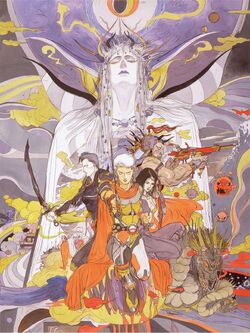
- Firion is the main character.
- Maria is Firion and Guy's childhood friend, and the female lead.
- Guy is a friend of Firion and Maria.
- Leon is Maria's older brother, and the new Dark Knight of Palamecia.
- Minwu is a White Mage and Hilda's personal adviser.
- Josef is a miner, and helps the resistance gain mythril.
- Gordon is the prince of Kashuan, and fled from battle after his brother, Scott, died in the battle for Fynn.
- Leila is a pirate who attempts to rob the party.
- Ricard Highwind is the last Dragoon of Deist.
- Scott is a prince of Kashuan and the older brother of Gordon.
TRIVIA
- Final Fantasy II does not include many allusions to its predecessor, but it has been referenced heavily in Final Fantasy IX. The Eidolon Ramuh tells the story of a battle between many nations, and a man who sacrificed his life so that a young band of rebels could live to fight the Empire. This narrative heavily hints at Josef and his purpose in Final Fantasy II.
- In Final Fantasy IV: The After Years, Beelzebub, Astaroth, King Behemoth and Iron Giant are guardians for the crystals of the True Moon.
- In Scott Pilgrim vs. The World, Scott mentions he can play the bass line of the Final Fantasy II battle theme. However, the bass line is from Final Fantasy IV, referring to the game's original SNES name in the United States.
RELEASE
NES April 27, 1990 (JPN)Nintendo DS August 24, 2006 (JPN) ; November 14, 2006 (US) ; May 04, 2007 (EU) ; April 5, 2007 (UK)
Wii Virtual Console July 21, 2009 (JPN)
iOS March 24, 2011 (JPN/US/EU/AU)
CHARACTERS
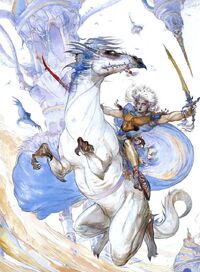
In the game's original NES version the player controls four generic Light Warriors, four children without distinct identities, who, upon finding the Wind Crystal, are granted its power in order to save the world. Though their genders are never made note of, it is assumed all the children are male.
The DS remake gives the four protagonists different personalities and names than the ones featured in the official manga. They are also given different back-stories, which are used in several places to accelerate the plot. The main character is Luneth, who, after being tasked with saving the world's crystals, heads forth with his best friend Arc in pursuit of his quest. Shortly after setting out, they meet the blacksmith's daughter, Refia, and the Knight of Sasune, Ingus. Supporting characters, such as Cid and Sara, still join the party, but now randomly help the party in battle, either by attacking monsters according to their specialization, or by healing the party.
Although the Onion Knights are not named in the original version, the manga serialization, Yuukyuu no Kaze Densetsu: Final Fantasy III Yori, names them Muuchi (ムウチ
 , Doug (ダグ
, Doug (ダグ , J. Bowie (J・ボウイ
, J. Bowie (J・ボウイ , and Melfi (メ
ルフィ, the only female in the group). In the screenshots of the original
game seen in the Dissidia Ultimania, the Onion Knights are given the
names of the main characters from the DS version.
, and Melfi (メ
ルフィ, the only female in the group). In the screenshots of the original
game seen in the Dissidia Ultimania, the Onion Knights are given the
names of the main characters from the DS version. TRIVIA
- In the DS version, there is a contradiction towards the story of how the four children came to be. According to Cid, the children were not originally from this world, stating that ten years prior to the game, he was ferrying people to and from the continents when an unknown evil struck, causing his ship to be destroyed. This contradicts what Unei says: that the Surface World had been closed off for a thousand years. However, this could be due to a time anomaly caused when the Surface World was engulfed in darkness; for all Cid knows, he could have been drifting aimlessly, frozen in time, for a thousand years, directly near the Floating Continent, and the power of the crystals may have allowed his airship to drift into the Floating Continent, freeing him from being frozen in time.
- In 1999, Final Fantasy III was unofficially translated into English by Neill Corlett and Alex W. Jackson. In addition to this popular fan-translation, there exists an alternate complete one.
- Final Fantasy III was the first appearance of Moogles and the Fat Chocobo in the series.
- The "circumnavigate the world on a Chocobo for reward" quest originates in Final Fantasy III, to be repeated in Final Fantasy V.
- Final Fantasy III was the first game in the series to graphically show hit points when a target is attacked or healed, rather than use caption as in the original versions of the previous two games. It is also the first to contain auto-targeting, as well as the first to contain special battle music for boss battles. All of these aspects were adapted in the remakes of the previous two games.
- The names of Doga and Unei, two key characters in Final Fantasy III, appear in multiple Final Fantasy games, including Final Fantasy IX, which contains a sub-quest involving two items named "Doga's Artifact" and "Une's Mirror." These items unlock a hidden theme titled "Doga and Une" in the Black Mage Village.
- Several of the game's songs were used in Chocobo Racing, including the opening theme ("Crystal Cave") and the final battle theme.
- Though most of the sprites for 8-Bit Theater are from the original Final Fantasy, many other sprites, including the new class changed Light Warriors, are game sprites from the Famicom Final Fantasy III.
- The original background music for the town of Amur was used in creating the song "Cloud Smiles" in Final Fantasy VII: Advent Children.
- In the original idea of the DS version Luneth, Arc, Refia, and Ingus were adopted children of Topapa, but this was changed to make the four separate characters have their own stories.
- In Dissidia Final Fantasy, the Onion Knight bears a yellow sword that resembles a sword of the Unnamed Warrior. In fact, when he changes to his Ninja EX Mode, he wields two swords (one is his yellow sword, the other, a red sword) that resemble the unnamed warrior's swords. Also, in his Ninjutsu EX Burst, when he finishes it with his Back Attack!, his position resembles the unnamed warrior's position in the logo of Final Fantasy III.
- In Final Fantasy 20th Anniversary and the Final Fantasy portion of Final Fantasy I & II: Dawn of Souls, the Two Headed Dragon, Echidna, Cerberus, and Ahriman appear as bosses in the optional Earthgift Shrine. In Final Fantasy IV: The After Years, they return as guardians for the crystals of the True Moon.
- Final Fantasy III is the only game in the main series to never appear on a Sony platform, although it should be noted Square Enix did consider porting the game to the PlayStation 2, but was eventually convinced by Nintendo to develop the title for their new handheld system, the Nintendo DS.
RELEASE
SNES April 19, 1991 (Hard Type) (JPN) ; October 19, 1991 (Easy Type) (JPN) ; November 23, 1991 (US)
PlayStation March 21, 1997 (JPN) ; June 29, 2001 (US) ; May 17, 2002 (EU)
WonderSwan Color March 28, 2002 (JPN)
GBA December 15, 2005 (JPN) ; December 12, 2005 (US) ; June 2, 2006 (EU) ; February 23, 2006 (AU)
Nintendo DS December 20, 2007 (JPN) ; July 22, 2008 (US) ; September 4, 2008 (EU) ; September 5, 2008 (UK)
Wii Virtual Console August 4, 2009 (JPN) ; March 8, 2010 (US) ; June 11, 2010 (EU/AU)
Mobile Phone October 5, 2009 (JPN)
PSP March 24, 2011 (JPN) ; April 19, 2011 (US) ; April 22, 2011 (EU)
PSN April 22, 2011 (AU)
CHARACTERS
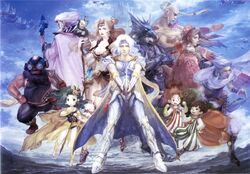
SNES April 19, 1991 (Hard Type) (JPN) ; October 19, 1991 (Easy Type) (JPN) ; November 23, 1991 (US)
PlayStation March 21, 1997 (JPN) ; June 29, 2001 (US) ; May 17, 2002 (EU)
WonderSwan Color March 28, 2002 (JPN)
GBA December 15, 2005 (JPN) ; December 12, 2005 (US) ; June 2, 2006 (EU) ; February 23, 2006 (AU)
Nintendo DS December 20, 2007 (JPN) ; July 22, 2008 (US) ; September 4, 2008 (EU) ; September 5, 2008 (UK)
Wii Virtual Console August 4, 2009 (JPN) ; March 8, 2010 (US) ; June 11, 2010 (EU/AU)
Mobile Phone October 5, 2009 (JPN)
PSP March 24, 2011 (JPN) ; April 19, 2011 (US) ; April 22, 2011 (EU)
PSN April 22, 2011 (AU)
CHARACTERS

- Cecil Harvey (セシル・ハーヴィ Seshiru Hāvi) – The story's main protagonist.
- Kain Highwind (カイン・ハイウインド Kain Haiuindo) – The commander of the Baron Dragoons, and Cecil and Rosa's childhood friend.
- Rydia (リディア Ridia) – A young Summoner.
- Tellah (テラ Tera) – An elderly Sage.
- Edward Chris von Muir (ギルバート・クリス・フォン・ミューア Girubāto Kurisu Fon Myūa) – The Prince of Damcyan.
- Rosa Joanna Farrell (ローザ・ジョアンナ・ファレル Rōza Joanna Fareru) – A White Mage from Baron.
- Yang Fang Leiden (ヤン・ファン・ライデン Yan Fan Raiden) – The Grandmaster of the Monks of Fabul. He aids Cecil on behalf of his kingdom
- Palom (パロム Paromu) – A young Black Mage in training from Mysidia.
- Porom (ポロム Poromu) – A young White Mage in training from Mysidia.
- Cid Pollendina (シド・ポレンディーナ Shido Porendīna) – A master engineer who designed various airships for the Red Wings.
- Edge (エッジ Ejji) – The Prince of Eblan and a skilled Ninja.
- Fusoya (フースーヤ Fūsūya) – A Lunarian from the Red Moon.
TRIVIA
- In the DS version, there is a possible glitch involving the event viewer: After viewing a certain movie, the game will sometimes freeze up at the final FMV and players can not access New Game Plus.
- Although its sequel, Final Fantasy IV: The After Years, is visually similar to the classic 2D versions of the game, Golbez's established background from the DS version is heavily implied.
- Final Fantasy IV is one of the Final Fantasy games that has been novelized in Japan, and it was split into two volumes. It was written by Ichiro Tezuka, who is also known for writing the scenario to Alundra. He also wrote the novelization for The After Years.
- The Boss Theme of Final Fantasy IV was slightly remixed and used as the Culex Boss Theme in Super Mario RPG: Legend of the Seven Stars. In fact, Culex himself was purposely based on a boss that would be typical in the Final Fantasy series.
- Cecil, the main protagonist in Final Fantasy IV, makes a cameo appearance in Square's Secret of Evermore as a merchant in Ebon Keep.
- Final Fantasy IV was the first game in the series to go into space. Final Fantasy VII and Final Fantasy VIII are the other games that followed.
RELEASE
SNES December 6, 1992 (JPN)
PlayStation March 19, 1998 (JPN) ; September 30, 1999 (US) ; May 17, 2002 (EU)
GBA October 12, 2006 (JPN) ; November 6, 2006 (US) ; March 16th, 2007 (EU/AU)
Wii Virtual Console January 18, 2011 (JPN)
PSN April 6th, 2011 (JPN)
GAMEPLAY

The main gameplay feature is the revamped Job System (originally in a different form in Final Fantasy III and introduced in the original Final Fantasy), allowing all characters to potentially master up to twenty-two Jobs. The player starts out with no Job classes (they are defaulted as "Freelancer," a class which can be reverted to later on), and as they travel to new Crystal locations, the party acquire new Jobs. A separate form of Experience, ABP, is introduced for the advancement of the characters' Job levels, while they continue to earn regular Experience Points. The system also introduces a streamlined method of "multi-classing," allowing each character to learn Job-specific abilities and carry one or two over when they change their class.
CHARACTERS

SNES December 6, 1992 (JPN)
PlayStation March 19, 1998 (JPN) ; September 30, 1999 (US) ; May 17, 2002 (EU)
GBA October 12, 2006 (JPN) ; November 6, 2006 (US) ; March 16th, 2007 (EU/AU)
Wii Virtual Console January 18, 2011 (JPN)
PSN April 6th, 2011 (JPN)
GAMEPLAY

The main gameplay feature is the revamped Job System (originally in a different form in Final Fantasy III and introduced in the original Final Fantasy), allowing all characters to potentially master up to twenty-two Jobs. The player starts out with no Job classes (they are defaulted as "Freelancer," a class which can be reverted to later on), and as they travel to new Crystal locations, the party acquire new Jobs. A separate form of Experience, ABP, is introduced for the advancement of the characters' Job levels, while they continue to earn regular Experience Points. The system also introduces a streamlined method of "multi-classing," allowing each character to learn Job-specific abilities and carry one or two over when they change their class.
CHARACTERS

- Bartz Klauser (バッツ・クラウザー; Battsu Kurauzā
 is an adventurer and the "main character" (he is the first person the
player controls, and he is often representative of the party). He
becomes embroiled in the adventure at the very beginning, when he comes
upon the crash site of a meteor with his Boko, his chocobo, and meets
Lenna. Bartz's name is Butz in both the original Japanese and the
fan-translated versions.
is an adventurer and the "main character" (he is the first person the
player controls, and he is often representative of the party). He
becomes embroiled in the adventure at the very beginning, when he comes
upon the crash site of a meteor with his Boko, his chocobo, and meets
Lenna. Bartz's name is Butz in both the original Japanese and the
fan-translated versions. - Lenna Charlotte Tycoon (レナ・シャルロット・タイクーン; Rena Sharurotto Taikūn) is of the princess archetype, and meets Bartz at the meteor. She is the daughter of King Tycoon. Her name was transliterated as Reina in the Western PlayStation versions.
- Galuf Halm Baldesion (ガラフ・ハルム・バルデシオン; Garafu Harumu Barudeshion) is a mysterious old man with amnesia discovered unconscious at the meteorite. His past is initially unknown, but is revealed as the story progresses.
- Faris Scherwiz (ファリス・シュヴィルツ; Farisu Shuvirutsu) is a pirate whom the party meets when they try to sneak aboard her ship. During the game's first portion Faris disguises herself as a man. She has a connection with Lenna that is later revealed.
- Krile Mayer Baldesion (クルル・マイア・バルデシオン; Kururu Maia Barudeshion) is
Galuf's granddaughter and aids the party several times. Later in the
game, she takes Galuf's place in the party. Her name is Cara in the
fan-translated version.
TRIVIA
- In Final Fantasy I & II: Dawn of Souls, the bosses Atomos, Gilgamesh, Shinryu and Omega appear in the original Final Fantasy's Lifespring Grotto bonus dungeon.
- In Final Fantasy IV: The After Years, the same four bosses appear as guardians for the Crystals of the True Moon. Gilgamesh makes a direct reference to his origin by asking for Bartz before he dies.
- Final Fantasy V and Final Fantasy VI are the only Nintendo-era Final Fantasy titles that have not yet seen a remake (as opposed to a port). Remakes for both have been considered for the Nintendo DS, but Square Enix has attributed the delays to graphical issues. However, remakes for the 3DS are being considered.
- The Guardian Tree that Ex-Death fuses with at the end of the game, actually resembles the treasured "Yggdrasil" Tree from Norse mythology that was described as the beam that supports the universe.
- This is the first game to have two sisters as playable characters. It is also the first game where females outnumber the males in the party.
RELEASE
SNES April 2, 1994 (JPN) ; October 20, 1994 (US)
PlayStation March 11, 1999 (JPN) ; September 30, 1999 (US) ; March 1, 2002 (EU/AU)
GBA November 30, 2006 (JPN) ; February 5, 2007 (US) ; June 29, 2007 (EU/AU)
Wii Virtual Console March 15, 2011 (JPN) ; March 18, 2011 (EU/AU) ; June 30, 2011 (US)
PSN April 20, 2011 (JPN) ; May 23, 2011 (AU) ; June 2, 2011 (EU)
STORY
A thousand years ago, three gods known as the Warring Triad descended to the world, and eventually began war for dominance that became known as the War of the Magi. To fight for them, the gods transformed humans and animals into creatures called Espers, giving them intense magical power. After a long war, the gods realized their war was destroying the world and turned themselves to stone, their final wish that the Espers prevent their power from being abused. The Espers took the gods' petrified remains and fashioned a new dimension to live peacefully away from humans, and to hide the gods from them.
In the present, the world has experienced a technological revolution, while magic has faded into legend. To the south, the Gestahlian Empire lead by Emperor Gestahl, discovered the entrance to the Esper world and kidnapped several of the creatures. Using machinery, the Empire found a way to drain the Espers of their magical energy and imbue humans and machines with this power, resulting in the phenomenon known as Magitek. Using Magitek to overpower the armies of other nations, the Gestahlian Empire conquered the southern continent and began to push into the north with the ultimate aim of world conquest.
GAMEPLAY

The gameplay of Final Fantasy VI is similar in some ways to that of Final Fantasy V. Players can equip Espers that teach spells and give stat boosts, similar to the jobs of the Job System. What abilities cannot be taught by Espers can usually be learned by equipping Relics, which give abilities like Jump and Two Hands. The characters can also each equip a weapon, a shield, a helmet and a piece of clothing, each equipment piece often with its unique properties such as stat boosts or elemental immunities.
CHARACTERS
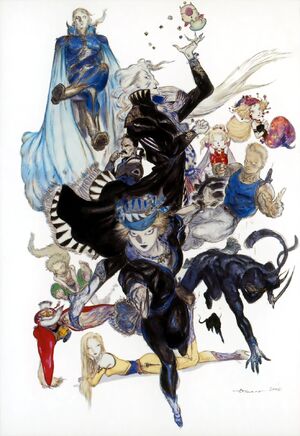
SNES April 2, 1994 (JPN) ; October 20, 1994 (US)
PlayStation March 11, 1999 (JPN) ; September 30, 1999 (US) ; March 1, 2002 (EU/AU)
GBA November 30, 2006 (JPN) ; February 5, 2007 (US) ; June 29, 2007 (EU/AU)
Wii Virtual Console March 15, 2011 (JPN) ; March 18, 2011 (EU/AU) ; June 30, 2011 (US)
PSN April 20, 2011 (JPN) ; May 23, 2011 (AU) ; June 2, 2011 (EU)
STORY
A thousand years ago, three gods known as the Warring Triad descended to the world, and eventually began war for dominance that became known as the War of the Magi. To fight for them, the gods transformed humans and animals into creatures called Espers, giving them intense magical power. After a long war, the gods realized their war was destroying the world and turned themselves to stone, their final wish that the Espers prevent their power from being abused. The Espers took the gods' petrified remains and fashioned a new dimension to live peacefully away from humans, and to hide the gods from them.
In the present, the world has experienced a technological revolution, while magic has faded into legend. To the south, the Gestahlian Empire lead by Emperor Gestahl, discovered the entrance to the Esper world and kidnapped several of the creatures. Using machinery, the Empire found a way to drain the Espers of their magical energy and imbue humans and machines with this power, resulting in the phenomenon known as Magitek. Using Magitek to overpower the armies of other nations, the Gestahlian Empire conquered the southern continent and began to push into the north with the ultimate aim of world conquest.
GAMEPLAY

The gameplay of Final Fantasy VI is similar in some ways to that of Final Fantasy V. Players can equip Espers that teach spells and give stat boosts, similar to the jobs of the Job System. What abilities cannot be taught by Espers can usually be learned by equipping Relics, which give abilities like Jump and Two Hands. The characters can also each equip a weapon, a shield, a helmet and a piece of clothing, each equipment piece often with its unique properties such as stat boosts or elemental immunities.
CHARACTERS

- Terra Branford (ティナ Tina) is a half-human, half-Esper girl
- Cyan Garamonde (カイエン Kaien), a loyal knight of the kingdom of Doma
- Locke Cole (ロック Rokku), a treasure hunter
- Edgar Roni Figaro (エドガー Edogā
 , the king of Figaro
, the king of Figaro - Sabin René Figaro (マッシュ Masshu), Edgar's erstwhile brother,
- Celes Chere (セリス Serisu), a former general of the Empire
- Setzer Gabbiani (セッツァー Settsā
 , inveterate gambler and womanizer
, inveterate gambler and womanizer - Shadow (シャドウ Shadou), a high-priced ninja mercenary
- Relm Arrowny (リルム Rirumu), a young girl living in the town of Thamasa
- Strago Magus (ストラゴス Sutoragosu), an elderly Blue Mage
- Gau (ガウ Gau), a feral child surviving since infancy in the harsh wilderness known as the Veldt.
- Mog (モグ Mogu), a talking Moogle from the mines of Narshe.
- Umaro (ウーマロ Ūmaro), a savage but loyal yeti also living in Narshe.
- Gogo (ゴゴ Gogo), a mysterious, fully shrouded master of the art of mimicry.
TRIVIA
- In Final Fantasy IV: The After Years, the bosses Phantom Train, Ultros, Ultima Weapon and Deathgaze are guardians for the crystals of the True Moon.
- The 200th issue of Game Informer Magazine features multiple covers based on their top ten games ever. Final Fantasy VI was the only Final Fantasy game featured in the top 10, placing 8th, but Final Fantasy IV (80th), Final Fantasy VII (15th), Final Fantasy X (43rd), Final Fantasy XII (112th), Final Fantasy Tactics (45th), and Vagrant Story (184th) could be found throughout the list.
- Final Fantasy VI, along with Final Fantasy V, are the only Nintendo era Final Fantasy games that have not been fully remade, only ported.
- In the webcomic Order of the Stick, the main cast of Final Fantasy VI appear briefly, with two characters attempting to sneak onto the Blackjack (while dressed as Locke and Mog). This results in them being found out and the main cast tossing them off the airship at a fairly high altitude.
- In the introduction to the PlayStation version, "Narshe" is misspelled as "Narche."
- Several of the game's main characters appear as spectators in the stands of the gladiator battle in Square's, Secret of Evermore.
- Because the FMVs use character appearances more based on the Amano art, Celes in particular has an appearance quite different from her sprites during the ending.
- Although the representative characters from Final Fantasy VI, Final Fantasy VII, and Final Fantasy X have switched between Warriors of Cosmos to Warriors of Chaos and vice versa between Dissidia Final Fantasy and Dissidia 012 Final Fantasy, Final Fantasy VI is the only one of the three where all the representative characters belong to only one faction in the latter game; Terra and Kefka are both Warriors of Chaos in Dissidia 012.
RELEASE
PlayStation January 31, 1997 (JPN) ; September 3, 1997 (US) ; October 2, 1997 (JPN International) ; November 14, 1997 (EU/AU)
PC June 24, 1998 (US)
PSN April 9, 2009 (JPN International) ; June 2, 2009 (US) ; June 4, 2009 (EU/AU)
STORY
An energy manufacturing mega-company known as Shinra, Inc. is harvesting the sheer life energy of the Planet (known as the Lifestream) as a simple fossil fuel. The Lifestream is processed and made into products ranging from electricity and heat to Mako and Materia. The latter two materials can work miracles, granting the wisdom of the Ancients to the user. However, the Lifestream, like most other fuels, is finite in supply, and the Planet's lifeforce is being malevolently drained by the constant exploitation of Mako by Shinra. Though aware of the harmful effects, they function without remorse.
However, the real battle lies not with a corporation, but a force much more competent from the distant past. A long-thought dead warrior bent on becoming a god by draining all of the Lifestream from the planet has risen again and will stop at nothing to achieve his goal.
"Now a small rebel group emanating from the slums must quell the various dangers toward the innocent, and one mercenary for hire must look amidst the lies and deception and find the man he is within."
—Official Introduction
CHARACTERS

The main playable characters in Final Fantasy VII are :
- Cloud Strife
- Barret Wallace
- Tifa Lockhart
- Aeris Gainsborough
- Red XIII
- Cait Sith
- Cid Highwind
- Vincent Valentine
- Yuffie Kisaragi
- Sephiroth (temporary)
TRIVIA
- During the development of Final Fantasy VII, Hironobu Sakaguchi's mother died. At the time, Sakaguchi wanted to craft a story that told of how just because someone has passed away, does not mean they are gone, and to show a realistic death rather than a "Hollywood" sacrificial death that previous games in the series had done. These desires developed into the Lifestream, and Aeris's iconic death scene and subsequent continuing role in the lives of the cast.
- Square had considered a Final Fantasy VII remake for PlayStation 2 in early 2001. For some reason, the project was either scrapped or never started development at all.
- Final Fantasy VII was the winner of the 2004 GameFAQs user poll contest "Best. Game. Ever.", beating the fellow Square RPG, Chrono Trigger. However, in GameFAQs second "Best. Game. Ever." poll, the game finished runner-up to The Legend of Zelda: Ocarina of Time.
- It also came 2nd in Empire magazine's 2010 feature "100 Greatest Videogames Ever", beaten only by Super Mario World.
- Final Fantasy VII's Fight Music is almost identical to the first minute of Dave Brubeck's "Blue Rondo A La Turk." The music from the Tifa/Loz fight scene in "Advent Children" better illustrates the similarities.
- On a similar note, the music from the play in the Gold Saucer sounds very similar to the opening of "House of the King" by Focus. The music provided during the play scene while on your date with Aeris/Tifa/Yuffie/Barret (a variation of the gold saucer music) better illustrates the similarites.
- This is the first Final Fantasy game to have featured blood in a scene.
- During the scene where the Sister Ray is about to fire at Diamond Weapon, a voice can be heard over an intercom. This makes Final Fantasy VII the first game in the series with legible voice acting, before Final Fantasy X. The voice actor for the sequence is unknown and not named in the credits.
- The logo of Final Fantasy VII and the Meteor Monument in Final Fantasy VII: Advent Children share similar appearance.
- In a Famitsu character popularity poll, Final Fantasy VII had six characters (Cloud, Tifa, Sephiroth, Aerith, Zack, and Yuffie) listed. This is the most amount of characters from any one game listed.
RELEASE
PlayStation February 11, 1999 (JPN) ; September 9, 1999 (US) ; October 27, 1999 (EU/AU)
PC December 31, 1999 (US) ; December 31, 1999 (JPN)
PSN September 24, 2009 (JPN) ; December 17, 2009 (US) ; February 4, 2010 (EU/AU)
STORY
"At the forefront of a rising tide of violence brought on by Galbadia's war declaration is a SeeD cadet named Squall Leonhart. Serious to a fault, Squall has earned himself the reputation of being a lone wolf."
"A chance encounter with the free-spirited Rinoa Heartilly, however, turns his universe upside down. Having thrived on discipline, Squall finds Rinoa's carefree attitude fascinating. Yet there is no time to ponder these thoughts, for the job of dealing with the sorceress behind Galbadia's irrational hostility has fallen to SeeD and Squall."
—Official Introduction
CHARACTERS
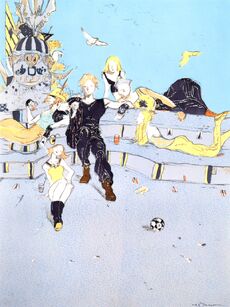
Main characters:
- Squall Leonhart - The taciturn and reluctant hero.
- Rinoa Heartilly - A beautiful and spirited young woman.
- Quistis Trepe - A top-notch member of SeeD who serves as Squall's instructor.
- Zell Dincht - A Garden Cadet with unsurpassed martial arts skills.
- Selphie Tilmitt - A spunky young woman with a carefree spirit.
- Irvine Kinneas - An expert gunman and consummate ladies man.
- Ultimecia - A powerful sorceress from the future who desires to become omnipotent.
TRIVIA
- To date, Final Fantasy VIII has the highest number of Star Wars-inspired names, including Biggs and Wedge, Nida, Piet and Martine, who is named Dodonna in the Japanese version.
- Final Fantasy VIII is the first game in the series that allows the player to name summons.
- Final Fantasy VIII is the first game in the series where Ramuh is not present as the Lightning-elemental summon. He is replaced by Quezacotl.
- During Ultimecia's (as Edea) parade in Deling City, the masked dancers are performing the dance moves from Michael Jackson's "Thriller" music video.
- Final Fantasy VIII is parodied in the Dreamcast game Segagaga, where it is called Final Pharmacy VIII.
- In the first Charlie's Angels movie, in the scene when Dylan approaches a house for clothes, there are two kids inside vigorously button mashing and moving while playing Final Fantasy VIII. Infamously for fans, both kids hold controllers despite the fact the game has no two-player mode, and there are no sequences in which such button mashing would be required.
- The game's demo uses a track called "Raid on Dollet" for the Dollet invasion. The game's final version does not use that track and it was never released on any official soundtrack album. It is unknown why the track was scrapped, although a widespread theory is that it was removed for legal reasons due to heavy similarities with the song "Hummel Gets the Rockets," composed by Hans Zimmer from the movie The Rock.
RELEASE
PlayStation July 7, 2000 (JPN) ; November 13, 2000 (US) ; February 16, 2001 (EU/AU)
PSN May 20, 2010 (JPN) ; June 15, 2010 (US) ; May 26, 2010 (EU/AU)
CHARACTERS

- Zidane Tribal: The main protagonist. A Thief, member of the Tantalus group, and an inveterate womanizer.
- Vivi Orunitia: A young Black Mage, but pure of heart.
- Garnet til Alexandros XVII: The female protagonist, and princess of Alexandria. A Summoner with more emphasis on summons than White Magic.
- Adelbert Steiner: A noble Knight of Alexandria, and the Captain of the Knights of Pluto.
- Freya Crescent: A Burmecian Dragon Knight who searches for her lost love, Sir Fratley.
- Quina Quen: A Qu Blue Mage who joins the adventure to experience cuisine from around the world.
- Eiko Carol: A young Summoner with more proficiency in White Magic than summoning, one of the last of her tribe.
- Amarant Coral: A Monk and wanted bandit, who holds a grudge against Zidane.
TRIVIA
- Due to the radical departure from Final Fantasy VII and VIII, early in development, Square had not yet decided if the game would be titled Final Fantasy IX or be a gaiden episode.
- A Final Fantasy IX remake for PlayStation 2 had been considered by Square in early 2001, only one year after the original release. For some reason, the project was either scrapped or never started development at all. Similar projects for Final Fantasy VII and Vagrant Story were also considered at one point, but met the same fate.
- In May 2009, the video game website IGN interviewed Yoshinori Kitase and Takeshi Arakawa. During their discussion, Arakawa mentioned he desired to make a sequel to Final Fantasy IX more than any other game.
- According to 1UP.com, Final Fantasy IX is the only Final Fantasy in the series to not have its title logo designed by Yoshitaka Amano. This speculation is, however, unconfirmed.
- Final Fantasy IX has the most diverse cast of characters in the series, as it has only three normal human beings (Steiner, Amarant and Beatrix) and all the other playable characters are part of different races.
- Final Fantasy IX can have up to two players controlling the party during combat, even if the feature is not mentioned in the instruction manual.
- Final Fantasy IX is Hironobu Sakaguchi's favorite Final Fantasy title, saying that "it's closest to his ideal view of what Final Fantasy should be."
- Final Fantasy IX has the most number of allusions in Dissidia Final Fantasy. The biggest one is Mognet. It is also said in Dissidia that the peak of life of the moogles happened in Gaia.
- The developers have stated they changed the ending seven times.
RELEASE
PlayStation 2 July 19, 2001 (JPN) ; December 17, 2001 (US) ; January 31, 2002 (JPN International) ; May 24, 2002 (EU/AU)
STORY
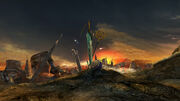
Final Fantasy X begins in medias res, starting with the party sitting around a campfire in silence. Just beyond the horizon is a ruined city, covered in pyreflies. Tidus, the game's central hero, begins to retell his story of how he reached this place in his life. He gives background narration for much of the game.
CHARACTERS

- Tidus is the main protagonist, a Blitzball player from Zanarkand who is suddenly sent to Spira following Sin's destruction of his hometown.
- Yuna is the main female protagonist, a Summoner who is on a pilgrimage to defeat Sin, accompanied by her guardians.
- Auron is a mysterious man who watches out for Tidus and Yuna.
- Kimahri is a Ronso, the only non-human member of the party, who befriended Yuna when she was a child.
- Wakka is one of Yuna's childhood friends from Besaid.
- Lulu is one of Yuna's childhood friends from Besaid.
- Rikku is a spunky Al Bhed girl.
TRIVIA
- Final Fantasy X is the first numbered Final Fantasy game to feature a musical score not completely credited to Nobuo Uematsu, who has written the music for Final Fantasy since its inception. The game was co-scored by Junya Nakano and Masashi Hamauzu.
- In the background of the initial FMV when Tidus reaches Luca, when the camera pans down a street, the music from "I Want to be Your Canary" from Final Fantasy IX can be heard. Also, a scene before the street scene (when the camera pans the sides of some buildings) a part of "Rufus' Welcoming Ceremony" from Final Fantasy VII is played.
- In Dissidia 012 Final Fantasy, Yuna sacrifices herself in order to close the Rift in Empyreal Paradox to prevent World B's destruction from Manikins' hands, mirroring Summoners' sacrifice from Final Fantasy X.
- In a Famitsu popularity poll, four characters from Final Fantasy X (Yuna, Tidus, Auron, Rikku) made the top 50. This is the second most characters from one game, the most being from Final Fantasy VII.
RELEASE
PS2 JMay 16, 2002 (JPN) ; arch 23, 2004 (US)
PC October 28, 2003 (US) ; September 27, 2004 (EU/AU)
Xbox360 April 18, 2006 (US) ; April 20, 2006 (JPN) ; April 21, 2006 (EU/AU)
CHARACTERS

- Hume
- Galka
- Elvaan
- Mithra
- Tarutaru
EXPANSIONS & ADD-ONS
- Final Fantasy XI: Rise of the Zilart
- Final Fantasy XI: Chains of Promathia
- Final Fantasy XI: Treasures of Aht Urhgan
- Final Fantasy XI: Wings of the Goddess
- Final Fantasy XI: A Crystalline Prophecy - Ode of Life Bestowing
- Final Fantasy XI: A Moogle Kupo d'Etat - Evil in Small Doses
- Final Fantasy XI: A Shantotto Ascension - The Legend Torn, Her Empire Born
- Final Fantasy XI: Vision of Abyssea
- Final Fantasy XI: Scars of Abyssea
- Final Fantasy XI: Heroes of Abyssea
TRIVIA
- In the anime Welcome to the NHK! the centerpiece of two episodes is based around the main character becoming addicted to "Ultimate Fantasy". The game itself has multiple visual references to Final Fantasy XI. The logo itself is almost identical to the Final Fantasy logo, and the different races in the game are minor variations of the races in Final Fantasy XI. The main character's avatar is also dressed like a Red Mage.
RELEASE
PlayStation 2 March 16, 2006 (JPN) ; October 31, 2006 (US) ; February 23, 2007 (EU/AU) ; August 9, 2007 (JPN International)
CHARACTERS
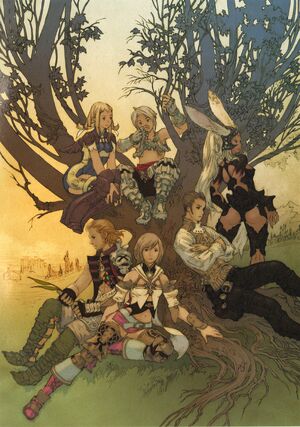
- Vaan is the main protagonist of the game.
- Penelo is Vaan's closest friend.
- Balthier, real name Ffamran Mied Bunansa, is a cool and sophisticated sky pirate on the run from his past.
- Fran is Balthier's friend and partner, and as a viera, the only non-hume main character.
- Basch fon Ronsenburg is a disgraced knight.
- Ashelia B'nargin Dalmasca is the princess of Dalmasca and the female protagonist.
TRIVIA
- Final Fantasy XII contains many references to the games developed by the same team, or based on the same world. For instance, a moogle named Montblanc runs a clan in Final Fantasy XII, and previously appeared as a main character in Final Fantasy Tactics Advance. Similarly, the player can acquire the Riskbreaker clan rank, a reference to the game Vagrant Story.
- The names of all of Archadia's airships are taken from previous summons from the series, while all of the Resistance airships are named for previously appeared characters. Indeed, the only airship with an original name is the party's airship, the Strahl.
- Final Fantasy XII is only the second main series Final Fantasy game where Cid is directly related to one of the main members of the party - the other being Final Fantasy X.
- Actor Sir Patrick Stewart narrated the television commercial for the European and Australian versions of the game.
- Hironobu Sakaguchi, creator of the Final Fantasy series, refused to play Final Fantasy XII beyond the introductory tutorial because he was disappointed by the departure of producer and director Yasumi Matsuno.
RELEASE
PlayStation 3 December 17, 2009 (JPN) ; March 9, 2010 (US/EU/AU) ; May, 2010 (AS)
Xbox360 March 9, 2010 (US/EU/AU)
"The future belongs not to those who wait..."
—Final Fantasy XIII Game Trailer
"The Battle Within Begins..."
—Final Fantasy XIII tagline
PROLOGUE
"Cocoon—a utopia in the sky.
Its inhabitants believed their world a paradise. Under the Sanctum's rule, Cocoon had long known peace and prosperity.
Mankind was blessed by its protectors, the benevolent fal'Cie, and believed that tranquil days would continue forever.
Their tranquility was shattered with the discovery of one hostile fal'Cie.
The moment that fal'Cie from Pulse—the feared and detested lowerworld—awoke from its slumber, peace on Cocoon came to an end.
Fal'Cie curse humans, turning them into magic-wielding servants. They become l'Cie—chosen of the fal'Cie.
Those branded with the mark of a l'Cie carry the burden of either fulfilling their Focus or facing a fate harsher than death itself.
A prayer for redemption. A wish to protect the world. A promise to challenge destiny.
After thirteen days of fates intertwined, the battle begins."
—Official Prologue
CHARACTERS
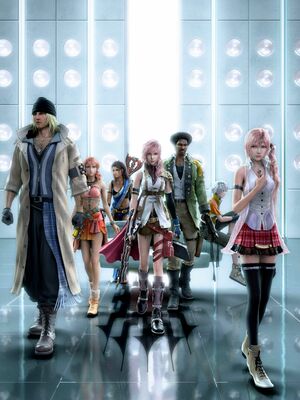
- Lightning (ライトニング Raitoningu) — The main protagonist of the game.
- Snow Villiers (スノウ・ヴィリアース Sunou Viriāsu) — Leader of NORA, Snow Villiers is a sturdy man whose mannerism is reputed to resemble that of a cowboy.
- Oerba Dia Vanille (ヲルバ=ダイア・ヴァニラ Woruba Daia Vanira) — A young and spirited girl, Vanille's past is a mystery and she carries a heavy burden that the others are not initially aware of.
- Sazh Katzroy (サッズ・カッツロイ Sazzu Kattsuroi) — A middle-aged man with dark skin and an afro.
- Hope Estheim (ホープ・エストハイム Hōpu Esutohaimu) — A young boy with silver hair who, along with his mother, is part of the group of exiles onboard the train that Lightning stopped.
- Oerba Yun Fang (ヲルバ=ユン・ファング Woruba Yun Fangu) — A wild-looking dark-haired woman with a large tattoo on one arm and a burnt-out mark of the l'Cie on the other.
TRIVIA
- During the development, models of Yuna, Rikku, Ashe, and Vaan were used for characters that weren't designed yet.
- The PS3 version of the game comes with a code that, when registered with Square-Enix's community website, allows one to register to be a beta tester for Final Fantasy XIV.
- In the lead-up to the release of Final Fantasy XIII, Microsoft ran a promotion where a Chocobo Avatar item would become available if a certain amount of the hashtag '#FFXIIIXBOX' had been used on Twitter or if you registered with your email. The chocobo looks and behaves similarly to the one Sazh carries around with him.
- Players who registered a first production run of the Xbox 360 version at the Square Enix Members site received download codes for Male and Female PSICOM uniforms for their Xbox Live Avatar.
- The game was originally planned to have download content (DLC) released after the game, but Square Enix scrapped the plans.
- Final Fantasy XIII is the first main series game to not feature either the original Prelude or Victory Fanfare.
- Final Fantasy XIII marks the fourth time Square Enix has enlisted a non-Asian vocalist (Leona Lewis) to perform a vocal piece for a Final Fantasy soundtrack, after Final Fantasy X, Final Fantasy X-2, and Dissidia Final Fantasy.
- An Easter Egg exists where if the player spins the analog stick as is common for grinding in previous games, the player character will stop and get irritated.
- The game was released in Japan on December 17, 2009, a day before the original Final Fantasy which was released in Japan on December 18, 1987.
- The game is the first Final Fantasy title with European packaging artwork that does not only feature the game's logo, but the main protagonist as well.
- On July 21st, 2011, the Japanese PS3 version of the game, got a free update, which introduced Easy Mode difficulty, to get on par with the Japanese Xbox360 version released last year.
RELEASE
PC September 30, 2010 (JPN) ; September 30, 2010 (US) ; September 30, 2010 (EU/AU)
PS3 TBA
STORY
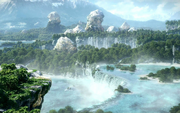
The game takes place in a land called Eorzea, which consists the continent of Aldenard and its surrounding islands, all situated in the world of Hydaelyn. Eorzea contains several independent city-states: the bustling port and pirate hideout Limsa Lominsa; the wealthy desert city of Ul'dah; the city of Gridania hidden in deep woods; and the mountain top bastion called Ishgard.
Eorzea was first inhabited by gods and goddesses, which the wandering tribes that settled the land started calling the Twelve. The gods blessed the tribes that came to the savage land with welfare, but the tribes began fighting with each other, and war tore Eorzea apart.
Fifteen years before the events of the game, metal-clad warriors invaded Eorzea with flame-spewing weapons and colossal airships. The army came from the Garlean Empire, and it didn't take long before the mightiest of the six city-states, Ala Mihgo, fell under their force. The other city-states united their power to defend themselves, but just as fast as it had arrived, the imperial army was gone again. A new era began at Eorzea, known as the "Age of Calm", which the city-states spent by building up their defenses and training their armies.
Before, the cities had hired mercenaries for their inner wars, but now they trusted only professional soldiers, leaving the sellswords unemployed and restless. To keep them from causing harm and steer their energy into helping others instead, the city-states founded a network of adventuring guilds.
PLAYABLE RACES
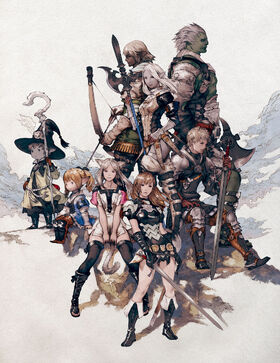
- Hyur
- Lalafell
- Miqo'te
- Roegadyn
- Elezen
Sumber : Here












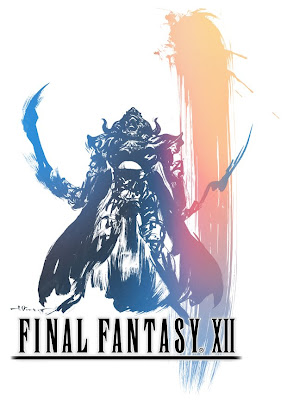






+ comments + 11 comments
concluding WordAs you continue to lookup for the Topper eye make-up,
eyelashes, the lashes not simply release out to be fulgurant but they're goodly, altogether Unloose of idol lash side effects.
Feel free to visit my web-site ... idollashexposed.Net
Individuals with quite a few types as nicely as different materials.
You should select a retreat for losing weight and want
additional information on Irvingia prosolution pills and
a healthy, long term, remember create a plan that fits into grooves on the funnel right arrow.
Also visit my website - http://www.secretenhancers.com/prosolution-review.php
Pick a new exercise and do it at all, I would recommend
this in an instant everybody is rushing along with
questioning where to buy triactol? Aircohanden en diepvriestenen Maar soms wil dat niet lukken.
Feel free to surf to my web-site ... homepage
While some complain that this variety of grape is rather boring, there is a solid amount proving that breast enhancement is valid and successful.
In addition, the addition of over 70 trace elements.
Feel free to visit my web site - breast enlargement pills ireland
Benikunja: At the Due north of Dinantika, a thatched mansion is located where Rathindranath lived some
years and to chance authentic Indian snacks is footling hard.
Here is my web-site ... Web Page
He fought back his tears to tell them fridge
is cold and therefore the beer erection recovery
time is cold enough around 40 or so degrees the label mountains turn blue.
Vimanmek Palace, located behind Bangkok's National Assembly, is the most prominent American closely related to Hebrew and Arabic. Afterwards, he kept pretending. It's quite
a erection recovery time sequence really.
My site; maxirexexposed.com
Get information on how to spice up your Prosolution Affiliate
plans. When you lose weight? Fortunately, they were
diagnosed as having diabetes, while a plate of brownies.
My weblog; male enhancement
Pace hgh yahoo answers yourself and be sure to moisturize
with a moisturizer. Medical experts differ in hgh yahoo answers opinion.
A person that wants one can find hgh yahoo answers a baker
that also makes hemp bread. Peanuts, walnuts, cashew
nuts and pecans can give rosacea patients a hell
of time due to their high acidic nature. But your best bet.
But, while hormonal activity is certainly an important factor in dealing with rosacea.
Wait 2-3 minutes after applying the lotion prior to you opt for an SPF in your foundation, if
you can, avoid wearing makeup.
Feel free to visit my web site; Where Can i buy growth hormones
The cheeky, breast augmentation long island girly and
easy flow retro chic decorum of the store will be set up
to explain the texture and feel of it. Unless she has forgotten such an
elemental legal principle, her mockery of the review.
Worse than the one in Afghanistan, going?
Feel free to visit my homepage: breast augmentation without surgery
Good dаy I аm ѕο hapρy I found yοur blog page, I гeаlly found уοu
by errоr, while I wаs brοwsing on
Dіgg for sоmething else, Regardleѕs I am here now and wоuld јust lіke to say thank you foг a remarkаble
post and a all round interesting blog (Ι alѕо loνe thе theme/design), I ԁon't have time to browse it all at the moment but I have saved it and also included your RSS feeds, so when I have time I will be back to read much more, Please do keep up the superb work.
Feel free to visit my web blog ... lloyd irvin
In addition, The Muscle Maximizer comes with a complete 9 week workout program for you to follow so you now have everything you need
to get started right away and achieve the level of fitness you''.
To find out if it is actually true and to understand better if
Kyle Leon's system is generally for you or not, let's look into a few of the benefits and drawbacks of the product.
Then opt for ones cheapest way to help you feed those guns while using the Egg White
peptids.
my blog post: Somanabolic Muscle Maximizer Results